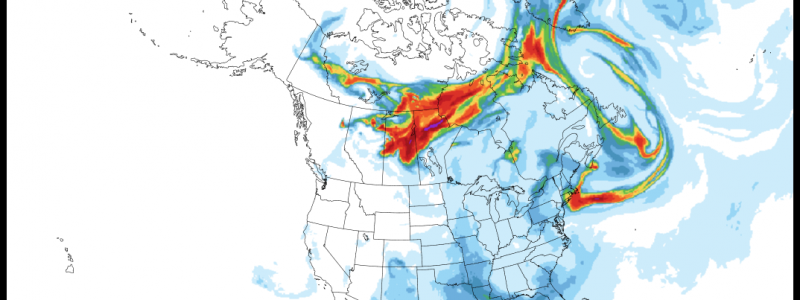
Hazy Skies Across The Northeast
That plume of colors you see below is smoke from Canadian wildfires pushing inland across the Northeast through the course of today. What’s more, it’s the fact that it’ll be rather noticeable than usual due to sufficient mixing in the boundary layer (lowest 1-2 kilometers of the atmosphere), and a subsidence inversion just aloft to help trap the smoke.
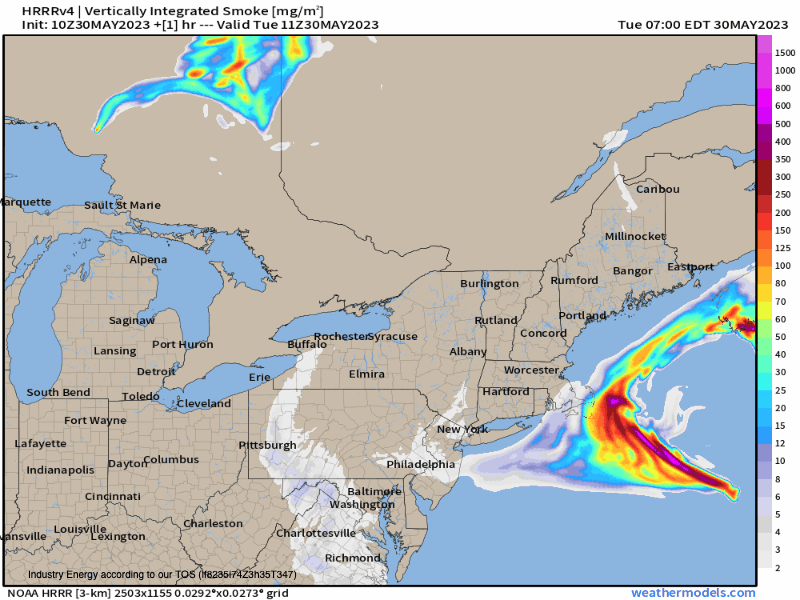
So where exactly is it coming from, and why the unique east to west movement? When we analyze 500mb pattern today across North America, we see we have a zonal flow across Canada indicated by the green and blue colors. This outlines the jet stream. Downstream across the Northeast, we have a ridge. As we know, ridges are clockwise circulations, and it’s just to the east of ridges aloft where the surface high pressure resides.
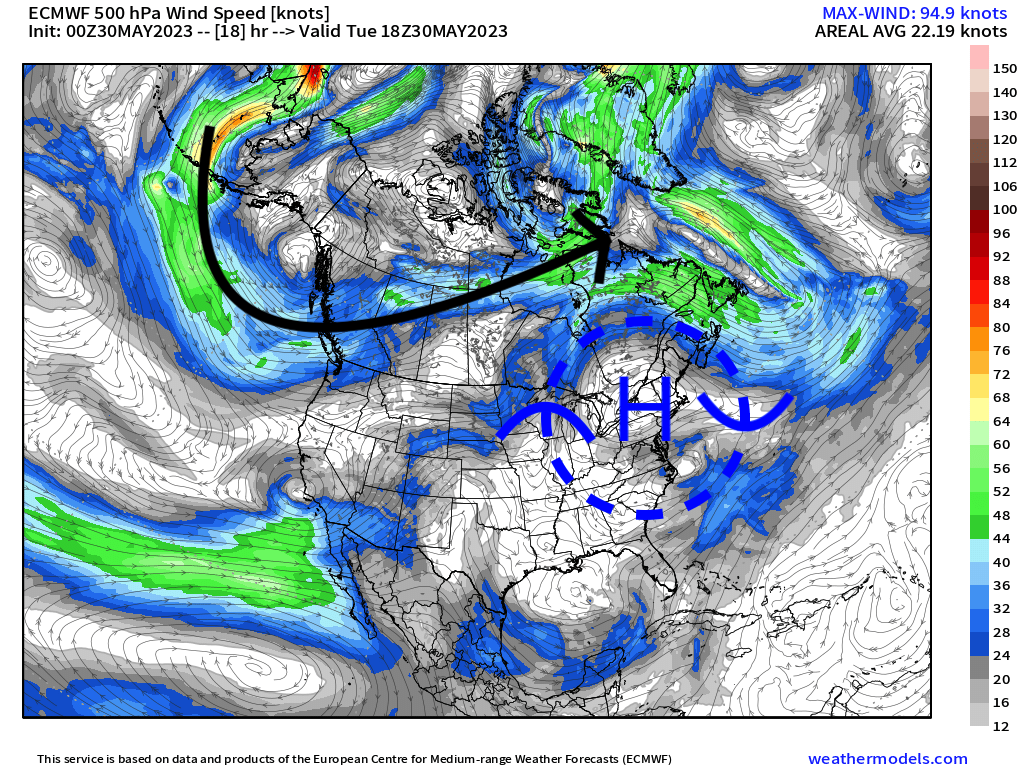
As we now look toward the boundary layer at 850mb (this is considered to be the top of the boundary layer), notice the high pressure is out across the coast of Maine and shifts south of Nova Scotia. The streamlines reveal easterly flow, and it’s due to this wind pattern and the right atmospheric conditions that allows for that plume of Canadian wildfire smoke to be advected inland.
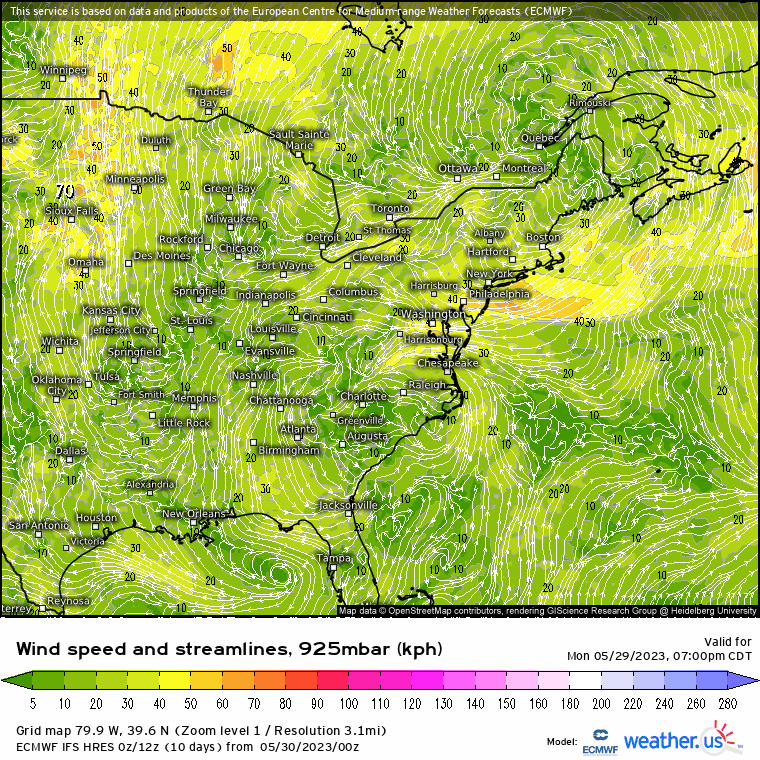
Thanks to a parameter from NOAA’s research model group, this shows vertically integrated smoke that measures the depth of aerosols in the atmosphere. This is essentially what the first loop shows, except here we can trace the origin of the smoke. The manifestation of wildfire smoke derives from Saskatchewan and Manitoba. This smoke rises up, gets caught in the atmospheric flow aloft and the surface, and is carried hundreds to thousands of miles. We can see how the smoke outlines the atmospheric wind streamlines around a large high pressure, and the end of it is directed right into the Northeastern portion of the U.S.
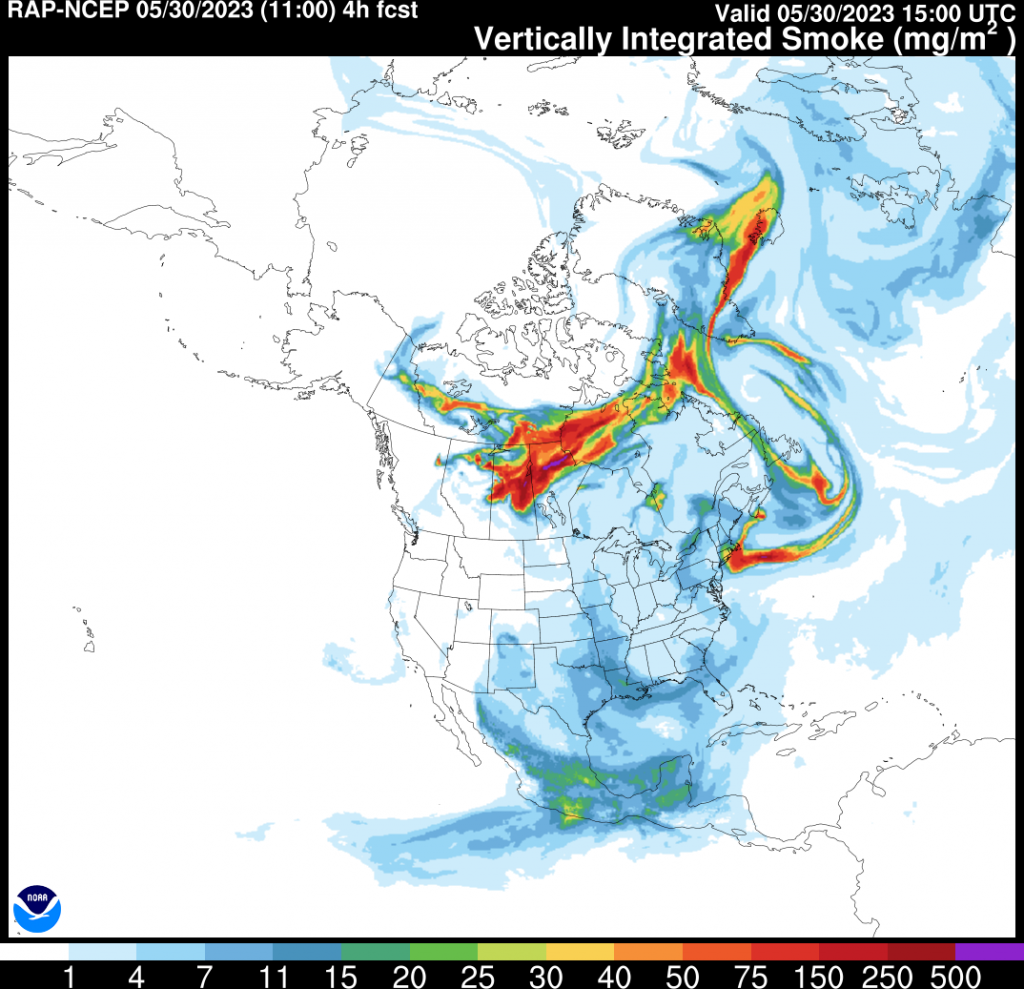
So today areas from NJ up to ME can be dealing with visibilities below 10 mi. As for air quality, it won’t necessitate an alert as it’ll just be mainly hazy today and will reduce in depth as we head into the middle of the week. It’s just another sign of the summer season as wildfires become more prominent under blocking ridges across rural areas in parts of North America, and hazy skies.










